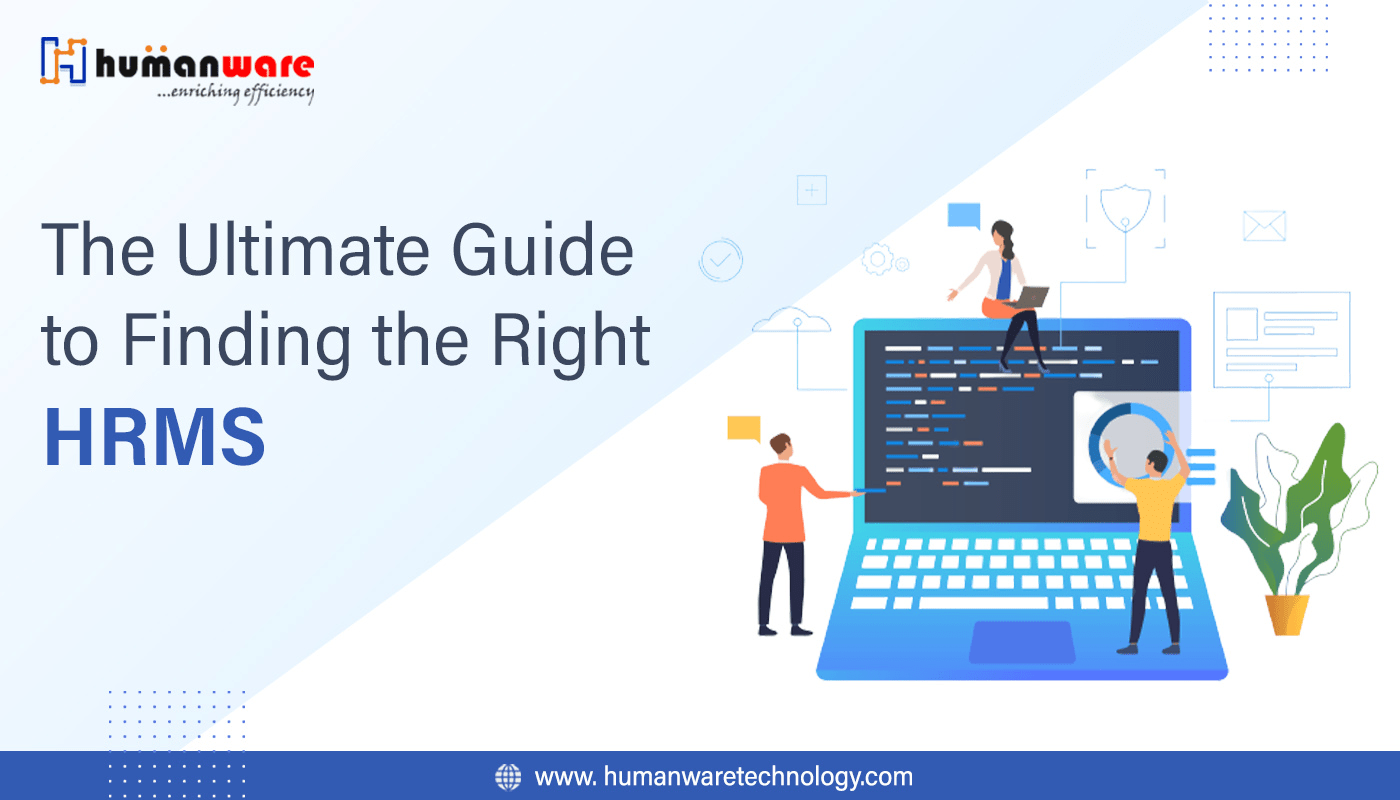
The Ultimate Guide to Finding the Right HRMS
The modern workforce is increasingly technology-driven, flexible and collaborative. Employees expect their organization's HR processes to meet these standards. A human resource management system offers everything employees want in terms of collaboration, engagement, benefits, career development, and more. This will help you build an engaged and motivated workforce, which in turn will improve retention rates and quality of work. Additionally, a growing number of organizations are embracing remote working as part of their organizational culture. Flexible work options can't shine without the right technology. An HRIS has all the tools needed to manage a remote workforce. A human resource management system takes everything online, helping employees perform all the HR functions they need, from booking attendance to training, wherever they are.
Choosing the right HR Management System (HRMS) is an important decision that can have a significant impact on your organization's success. With this guide, you will learn about the features and benefits of HRMS systems and how to choose the one that will best suit your needs.
Develop a Clear Plan for Your HRMS
Before investing in an HRMS, it's important to create a clear plan of what you need from the system and how it will be used. Ask yourself the following questions to develop a plan that meets your business objectives: What types of HR processes will the system manage hiring, onboarding, and performance reviews ? What features does the company need most? Do you need reporting capabilities or mobile access? How much data storage is needed? Are there any language or customization requirements? How critical is system security? Your answers to these questions should help you narrow down the options and identify a few contenders worth further research.
Set Realistic Goals for Use Cases & Data Migration
Once you've identified a few potential HRMS solutions that meet your objectives, you should set realistic goals for use cases and data migration. Think about what type of data would need to be migrated and how it can be structured into the new system. When mapping out the processes, determine which tasks are being done manually and which ones can be automated. Consider the user experience as well; will the new system provide users with an intuitive interface for easy navigation? Make sure that any system you choose will simplify processes, not add complexity.
Secure the Buy-in of Stakeholders
When deciding on an HRMS, it's important to ensure that you have the buy-in from your stakeholders. Get feedback from key users, like HR and IT staff, who will be using the system daily. Also make sure that executive decision makers are able to understand the benefits of using a new HRMS, so they can make informed decisions. Finally, don't forget to involve external partners like vendors and customers who may be impacted by the transformation in order to ensure successful change management.
Establish the ROI and Cost of Ownership Parameters Ahead of Time
Investing in an HRMS is a big decision and can come with significant financial implications. That’s why it’s important to set expectations ahead of time by understanding the potential return on investment (ROI) of the system, and identifying what costs will be incurred after installation. As you evaluate different systems, assess things like their upfront cost, installation timeframe, scalability, third-party provider support and total cost of ownership. This will help you effectively plan for any budget or timeline changes resulting from upgrading your HR system.
Map Out an Implementation Timeline and Processes
An effective implementation timeline and process will help ensure the transition to a new HRMS goes as smoothly as possible. Establishing one prior to onboarding the system sets expectations for all stakeholders involved and provides clarity on expected roles, responsibilities, and timelines associated with the project. Be sure to involve the IT department in any conversations about data migration – they’ll be instrumental in this process. Additionally, setting up structured training sessions for employees (in-person or virtual) will ensure smooth adoption amongst your team before launch day.
Conclusion
Choosing the right HRMS for your organization can be a bit tricky because there are so many vendors out there. By taking a systematic approach, you will be able to select the perfect HRMS that matches your organizational goals. Humanware technology, our HRMS, has all the necessary features to raise the level of your organization's HR management and make it simple and efficient. It helps you develop a collaborative and technology-driven work environment.